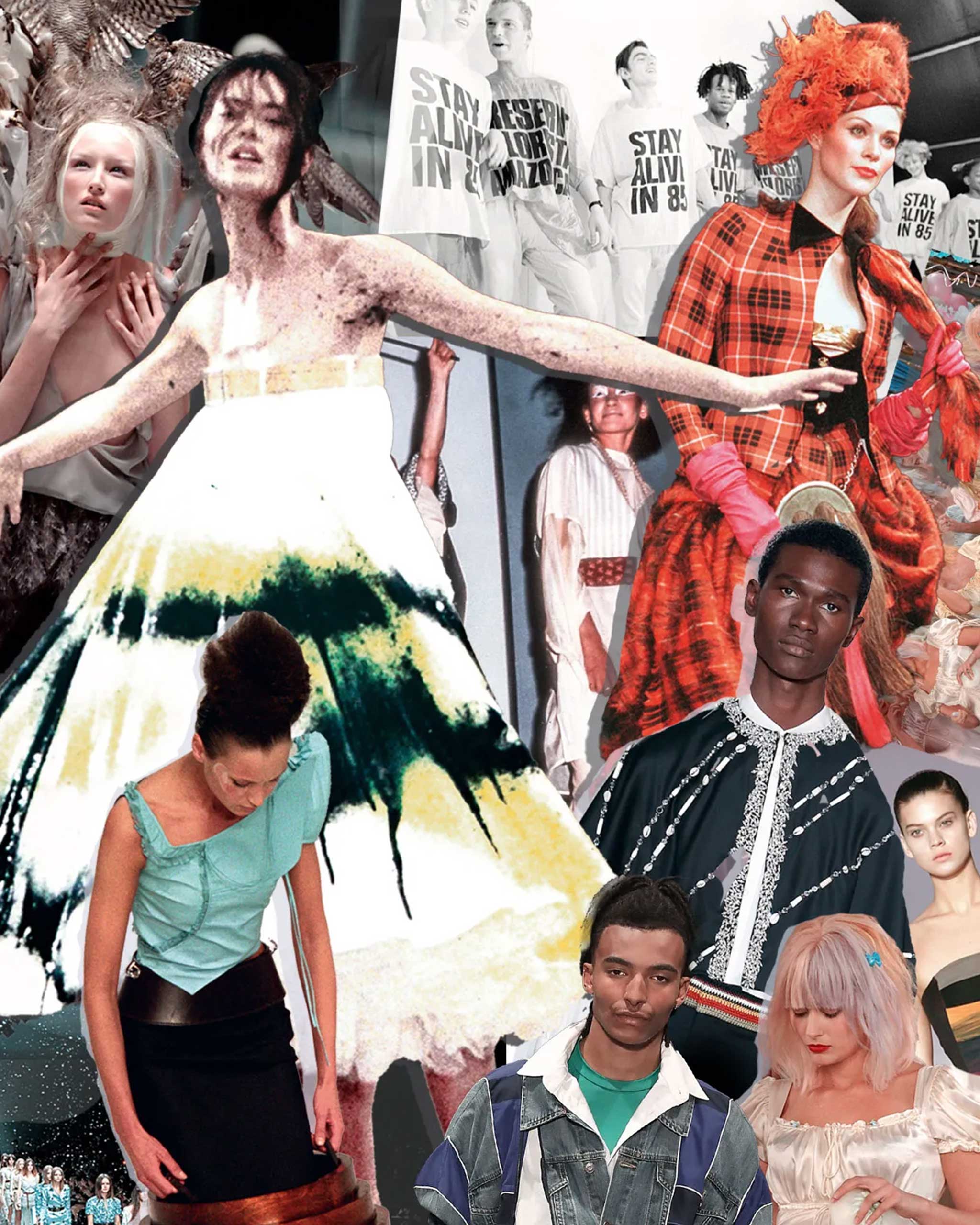London Fashion Week never existed until 1984, when a mysterious tent went up outside the Commonwealth Institute on Kensington High Street. I remember it because I’d been walking past, heard music pumping, gone around the back, waited for a security guard to look in the other direction and snuck in through a gap in the tent. There I stood, a mind-boggled English and history of art graduate (who had zero to do with fashion), watching a Katharine Hamnett riot taking place – a great gang of people charging the catwalk in parachute-silk shirts with flying tails, cotton-drill utility trousers and, as I remember it, Dunlop plimsolls.
Pure luck put me there to witness that take-off moment. I hadn’t a clue that it was the first time London shows had been organised into a schedule – or that this was the brainwave of Lynne Franks, the PR dynamo destined to become even more famous than her clients as the inspiration for Edina in Absolutely Fabulous. What I did know was this: the electric thrill of watching something so energetic – and interconnected with youth, music and creative radicalism – happen on a catwalk. Also, that I had to have a pair of Dunlop plimsolls before the day was out.

By the late 1980s, I’d worked my way up through young women’s magazines and The Guardian, and was at Vogue, trotting off to shows, notebook in hand, in my Jasper Conran red power jacket, Rifat Ozbek jersey pencil skirt, opaque black Donna Karan tights (the ultimate score at the time) and Myrène de Prémonville heels. By wild good fortune, I’ve ended up witnessing all the unforgettable highs of London Fashion Week, which has constantly changed – yet stayed the same – for 40 years. Since that inaugural season, LFW wraps its unpredictable city-wide character around the talents of generations of people from everywhere, and delivers shocks, tear-inducing poetry, astonishing ideas and the hilarious cheek you could only get in London.
In my scribbled sketches are the birth of Vivienne Westwood’s mini-crini, her Harris Tweed collection and lots more; John Galliano’s magical Les Incroyables show, when girls wandered in dampened empire-line dresses; and all the visceral spectacles put on by Alexander McQueen and Hussein Chalayan. I was swept up on that kaleidoscopic high when a tidal surge of London talent hit in the Noughties and 2010s – Christopher Kane, Jonathan Saunders, Roksanda, Erdem, Mary Katrantzou, Meadham Kirchhoff, Simone Rocha, JW Anderson – more and more from all corners of the UK, Europe, Korea and China.

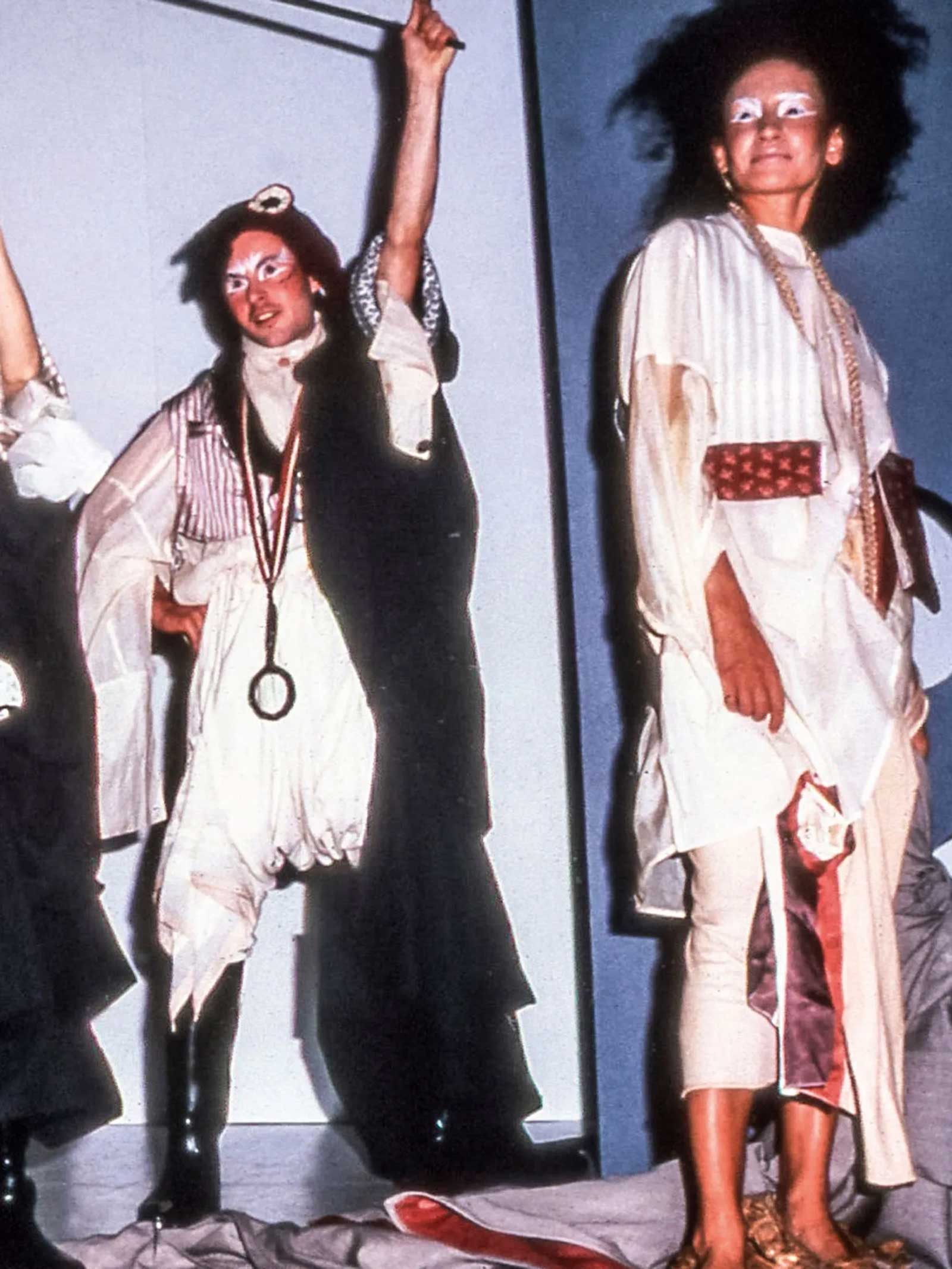
I saw the young sustainability pioneers Christopher Raeburn, Phoebe English and Priya Ahluwalia arrive, a new generation of Londoners finding solutions for the wicked waste of the fashion industry through ethical creativity. I applauded as a cohort of Black and brown leaders emerged – Martine Rose, Ashish Gupta, Grace Wales Bonner, Supriya Lele, Osman Yousefzada, Saul Nash, Bianca Saunders, Nicholas Daley, Paria Farzaneh and Foday Dumbuya of Labrum among them. Their work has uplifted the creativity of Britain’s cultures, communities and spiritual values on the world stage.
After the High Street Ken inaugural, the British Fashion Council pitched its tent at the Duke of York’s Barracks, the Natural History Museum, Battersea Park and Somerset House. That is, until general show tents went out of fashion. Once, in 2010, the venue was the platform of the old Eurostar terminal at Waterloo, where a beautiful light shone down on Peter Pilotto’s blue modernity, Mary Katrantzou’s walking lampshades and Meadham Kirchhoff ’s total candy-coloured fantasia, complete with a Dr Seuss-ian garden of pink-sprayed flowers.
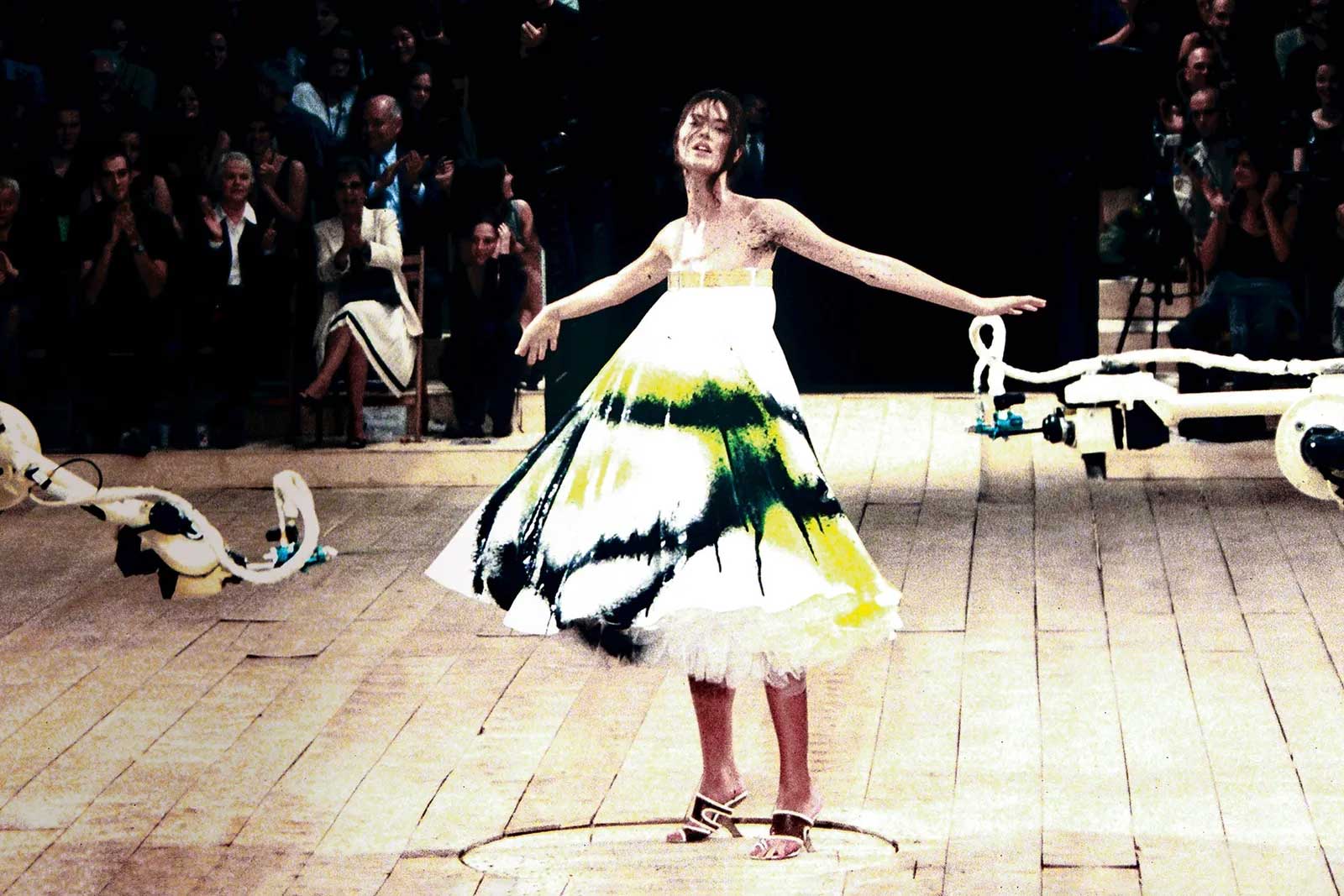
This city’s designers will take you to places you’ve never been – physically and emotionally. Their runways are East End basements, garages, underground clubs and medieval churches, rotting warehouses, and garden squares, high-rise City offices and neighbourhood streets, museums, theatres and palaces. Alexander McQueen showed his spring/summer 2001 collection, Voss, in a refuse collection depot in Victoria. That’s still the most confrontational show I’ve ever experienced, beginning with the psychological torture of being seated in front of a mirrored box in which he forced us, the audience, to look at ourselves. It then devolved into a staggering, disturbing, fantastic performance on vanity, insanity and narcissism: spectacular dresses, bound heads, towering castles-in-the-sky headdresses, and full grandiose break-downs acted out by Jade Parfitt, Erin O’Connor, Kate Moss and the rest.
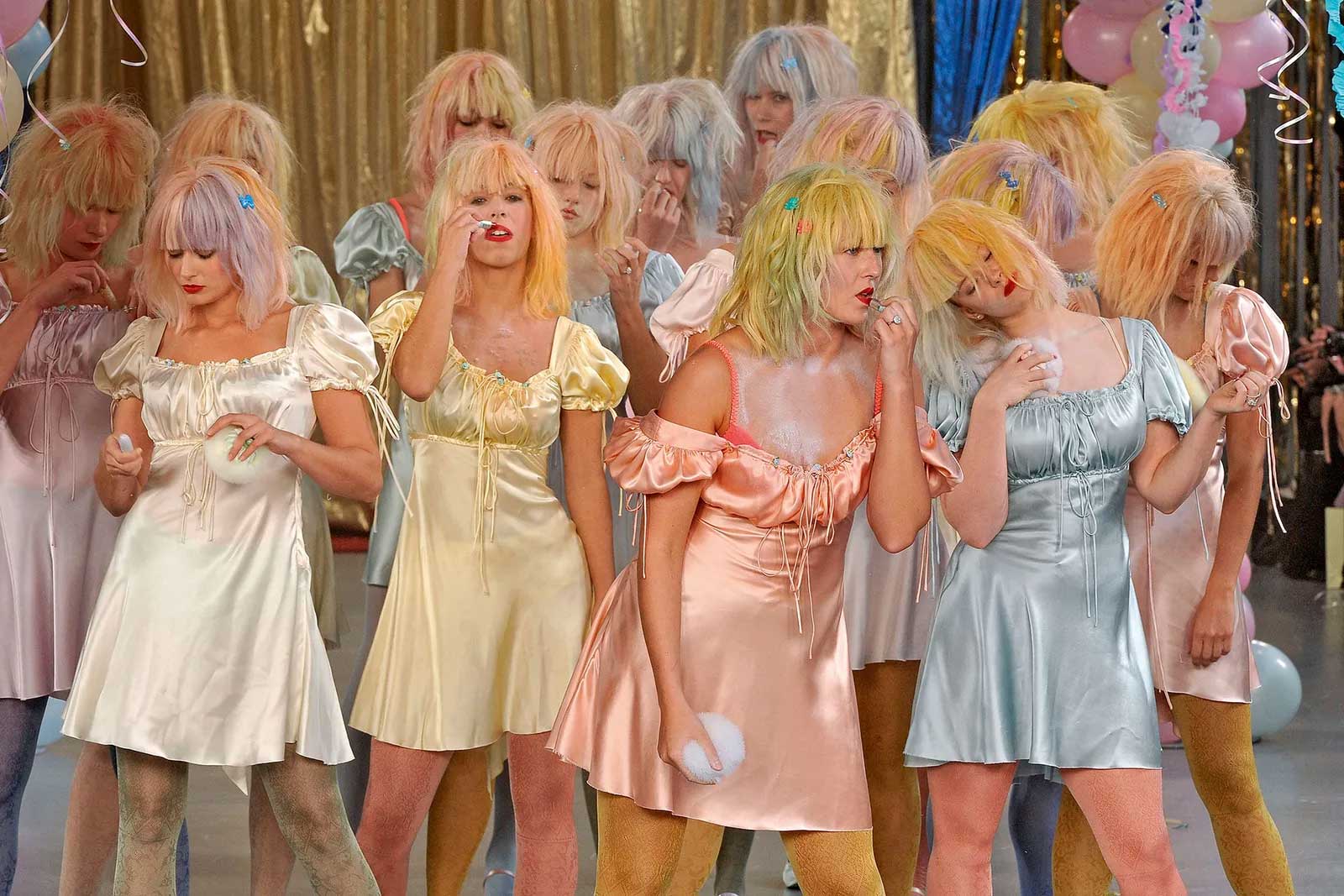
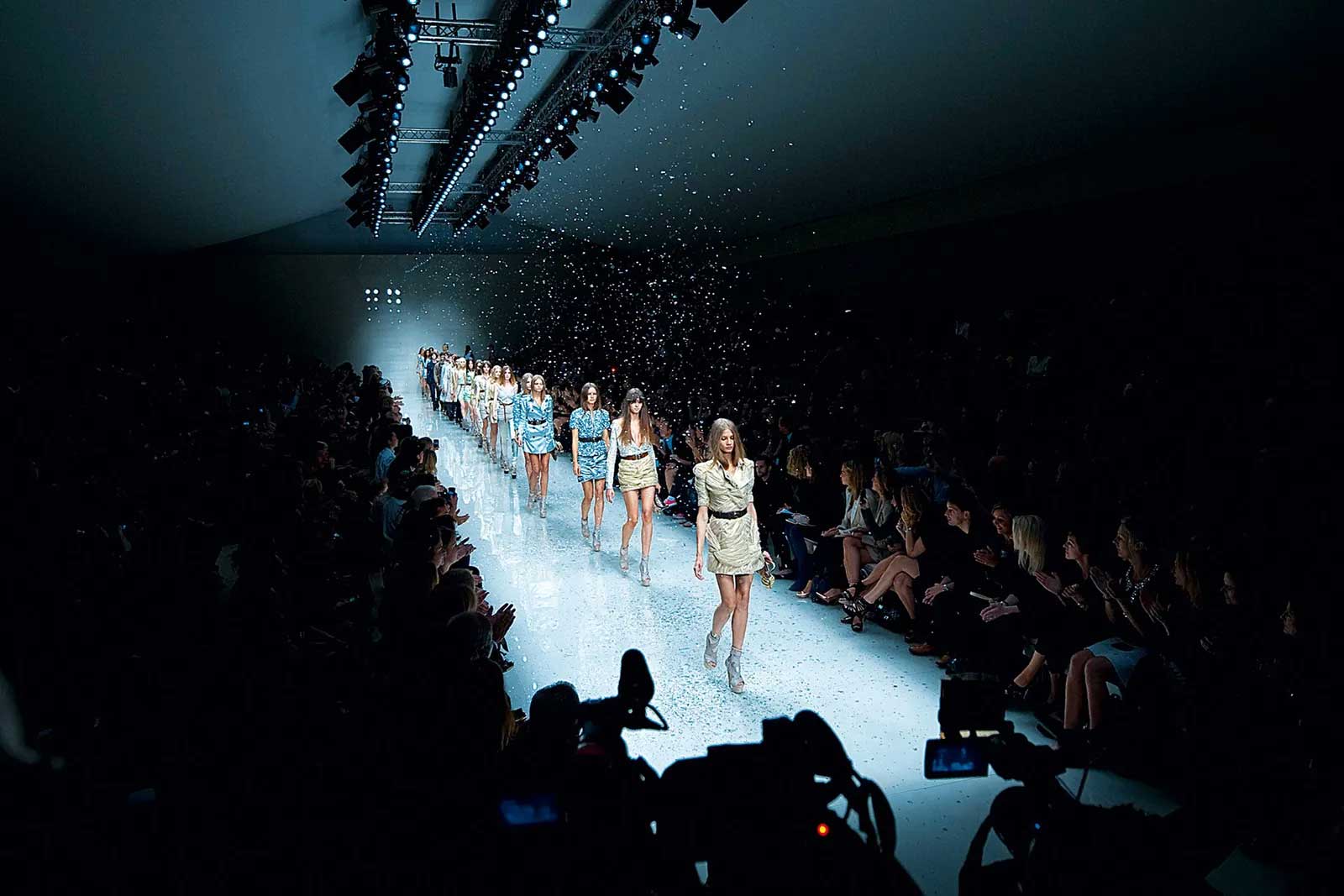
Then there was a sensation of a whole different order the season Christopher Bailey brought Burberry back to London in 2009 (the house had been showing in Milan for years). A huge tent landed in Kensington Gardens, right opposite the Royal College of Art, Bailey’s alma mater. Bailey was a pioneer, globally live-streaming his runways and kick-starting the “see now, buy now” era, which saw a collection of Burberry shearling aviator jackets ready for purchase right off the runway.
The adversary of such a jam-packed London Fashion Week schedule? The capital’s traffic – or, rather, the toing and froing in traffic. For spring/summer 2008, Prince jumped up from the front row of Matthew Williamson’s show and performed “Chelsea Rodgers”, backed by The Twinz. I’m still cursing the fact I missed it.
London, at the beginning, was the minnow in a pond of very much larger fashion players. The powers that were at the British Fashion Council and in the press had agonised about that: how to compete? Paris and Milan have their luxury powerhouses, New York has international mega brands, but nowhere else has the fearless creativity, the agenda-resetting abilities and wild originality that fuels London. That’s been true through economic crashes, recessions, Aids, the IRA bombings, the London terrorist attacks of 7/7, the Covid-19 pandemic – all of it. No matter what the down- times or the up-times, groundbreaking fashion people – waves of designers, models, stylists, hairdressers, make-up artists, photographers, set designers – have kept pouring out of London like nowhere else.


Everyone asks how. It’s the hordes of nonconformist fashion students who converge on London colleges and the tutors who teach them never to be derivative. It’s the energy and creativity of globally connected, multicultural communities from all around the UK. It’s the influence of every club and subcultural dresscode, from new romantics to rave, acid house, ragga, electroclash, nu rave, garage, grime, UK jazz; all the underground parties where the young have ever found their people; friends who’ve together decided to start something out of almost nothing except their outrageous, exuberant will to make a mark, have their say.
If I cast my mind back to the ’80s, Vivienne Westwood, Katharine Hamnett, BodyMap, Antony Price, Rifat Ozbek, John Galliano, Jasper Conran, Bruce Oldfield, Joe Casely-Hayford were making it happen. Margaret Thatcher was in Downing Street, and Diana, Princess of Wales and what she wore was obsessing the world. And although nobody was particularly pointing to it in these feminist years of power-shouldered women in the boardroom (or so the myth went), London was fielding streams of strong female designers of many generations: Jean Muir, Zandra Rhodes, Wendy Dagworthy, Betty Jackson, Ninivah Khomo, Bella Pollen, Helen Storey, Tanya Sarne’s label Ghost, English Eccentrics by the Littman sisters.

Soon after I dodged into that 1984 Katharine Hamnett show, she pitched up at 10 Downing Street to confront Margaret Thatcher – it was a Fashion Week reception – famously wearing her “58% Don’t Want Pershing” anti-nuclear weapons protest T-shirt. Politics, activism and subversion have run in the bloodstream of generations of London designers. I think that’s something to be really proud of. Designers speak up about issues, realising that fashion shows offer a platform that can broadcast ideas far beyond the immediate audience in the room. I was not the only one who was blinded by tears when Hussein Chalayan showed his collection on the stage of Sadler’s Wells for autumn/winter 2000. That was the show when a family was seen stepping into furniture that converted into dresses, packing up a room and leaving their home. It was high art, conceptual, beautiful – yet absolutely and clearly haunted by the plight of refugees.
The memory of that relevance never goes away – nor the fun and the hysteria, and the very great fashion that makes London what it is. We’re scrappy, we’re scandalous, we’re amazing at performance and theatre, we can be ever so posh and ever so out-there. Whatever it is, we’ll make you think and make you feel. Above all, you can’t afford to miss it, because London’s always where you see the future coming. That’s what I’ve been in it for. Lucky, lucky me.
This article was originally published on British Vogue.
- A Year On From Vivienne Westwood’s Memorial, Her Granddaughter Cora Corré Shares Her Personal Tribute
- Everything You Need To Know About The Met Gala 2024
- Follow The Sun: Pharrell Talks About His Debut Collection At Louis Vuitton
- A Legacy of Love: Inside the Cartier Trinity Ring’s Centennial Anniversary
